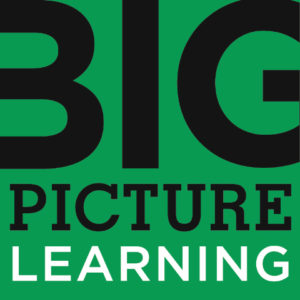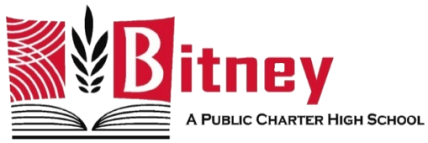
In 2016, Bitney Prep Charter High School proudly became part of the Big Picture Learning Network.
Big Picture Learning schools exist throughout the country and the world. They are in rural environments and urban environments. They serve both large and small populations of students. Some Big Picture schools exist in gleaming new buildings, while some can be found in retrofitted structures that haven’t been in use for some time.
In short, Big Picture schools (like the students they serve) often look dramatically different than one another. Each is its own unique environment where students can flourish as individuals within a community of learners. However, there are many elements within the Big Picture Learning design that are uncommon and distinct, which pull the network together and distinguish them from most other schools.
ONE STUDENT AT A TIME – The entire learning experience is personalized to each student’s interests, talents, and needs. Personalization expands beyond mere academic work and involves looking at each student holistically.
ADVISORY STRUCTURE – Advisory is the core organizational and relational structure of a Big Picture Learning school, its heart and soul, often described as a “second family” by students. Students stay with an advisor and a group of fellow classmates for four years, building close personal relationships that last a lifetime. At Bitney, students meet with their advisory four days a week.
LEARNING THROUGH INTERESTS AND INTERNSHIPS (LTIs) – Real-world learning is best accomplished in the real world. Big Picture students intern with experts in their field of interest, completing authentic projects and gaining experience and exposure to how their interests intersect with the real world. At Bitney, students spend all day on Wednesdays at an internship site of their choosing.
PARENT AND FAMILY ENGAGEMENT – Parents are welcome and valued members of the school community and play a proactive role in their children’s learning, collaborating in the planning and assessment of student work. They use their assets to support the work of the school and often play an integral role in building relationships with potential LTI mentors.
SCHOOL CULTURE – In Big Picture schools, there is palpable trust, respect, and equality between and among students and adults. Students take leadership roles in the school, and teamwork defines the adult culture. Student voice is valued in the school decision-making process and visitors are struck by the ease with which students interact with adults.
AUTHENTIC ASSESSMENT – Students are assessed not by tests, but by public displays of learning that track growth and progress in the student’s area of interest. Assessment criteria are individualized to the student and the real world standards of a project. Students present multiple exhibitions each year and discuss their learning growth with staff, parents, peers, and mentors.
SCHOOL ORGANIZATION – Schools are organized around a culture of collaboration and communication. They are not bound by the structures of buildings, schedules, bells, or calendars. There is an interdependence between school and community.
LEADERSHIP – Leadership is shared and spread between a strong, visionary director; a dedicated, responsible team of advisors and other staff; and students. The community functions as a democracy. A pervasive sense of shared ownership drives a positive culture dedicated to ongoing improvement.
POST-SECONDARY PLANNING – Students develop plans that contribute to their future success — be it through college, trades, schools, travel, the military, or the workforce.
PROFESSIONAL DEVELOPMENT – Regular advisor PD is conducted at each school by principals, other school staff, and BPL staff and coaches. A Big Picture School is a community of lifelong learners who embrace continuous improvement.
To find out more about the history of the Big Picture Learning network, please visit their website at https://www.bigpicture.org/
